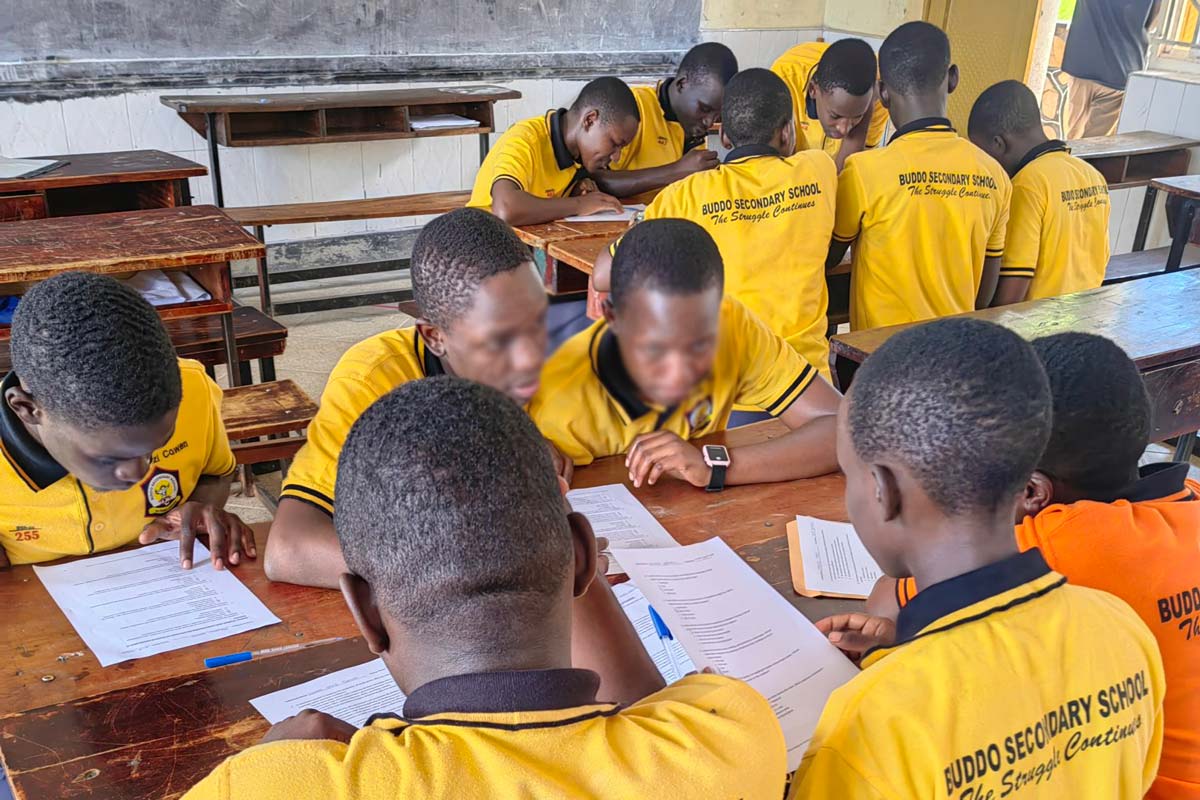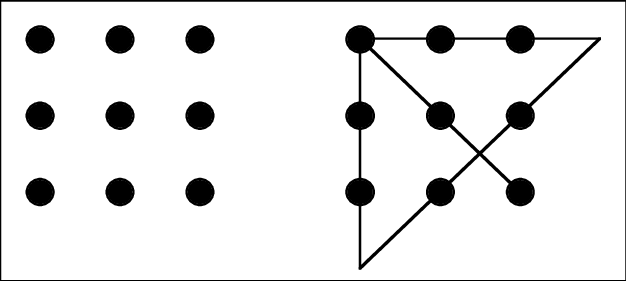
Will the New Lower Secondary Curriculum (NLSC) bring positive change to the Ugandan mind?
“To think outside the box is to fully understand the status quo then challenge it”- Allaya Cooks
One of the things that cripple the Ugandan mind is corruption, but apart from this, is boxed thinking (as I’d like to call it), which is a bigger problem than corruption. Can you imagine a whole government official who earns approximately $3,000 per month with an allowance that can go as high as $8,000 per month, stealing iron sheets? Iron sheets!
I am sure you’ve heard the phrase “that is not how we are supposed to do it” or “that’s not what they said we should do.” These phrases spill from the mouths of those who see only as far as their eyes can. Such people can be told that they are using their teeth all wrong, and they wouldn’t even doubt that. They are characterized by not having independent beliefs but instead swayed by society’s song.
Thinking outside the box means thinking of something in a new or creative way, it’s about looking past the obvious and ordinary to come up with new ideas and solutions. The Chinese technology company ByteDance did a great job thinking outside the box, thus TikTok. Look at Uganda’s one and only Kiira Electric Vehicles, tackling the problem of air pollution. Let’s not forget the Tooke initiative founded by President Yoweri Kaguta Museveni, adding value to Uganda’s immense banana supply.
Yet still with all these initiatives prevailing, the box traps many of us. Holly White, an American psychologist simplified the concept of out-of-the-box thinking. Originally, the box was in reference to the nine dot problem. The goal of this puzzle is to connect all the dots using not more than four straight lines without lifting your writing tool off the page. Naturally one would assume that the lines must be drawn within the boundaries. However, to solve this puzzle, one must let go of that assumption.

Figuratively speaking, the box is a metaphor for those assumptions that limit creative problem-solving. Symbolizing those boundaries that we cage our minds with, boundaries that hinder us from reaching our full creative potential. To overcome this, we must change our perspectives, question rules and try different approaches.
Dr. Holly states that although we interpret situations, we rarely critique the validity of the impressions made. We take in things as they are. As a result, we find ourselves confined by our false assumptions-stuck in the proverbial box. By staying true to what is allowable, correct or even possible, we constrain our imagination.
Thinking Outside The Box
There is a story of a prisoner who was forced to think outside his prison cell. He received a letter from his mother, in this letter, she lamented how she would not be able to dig up her garden for the season due to poor health. The man replied to her in a letter ‘Dear mum, unfortunately as you are aware, I am serving time in prison for a crime. However, there is $1,000 I hid in the garden behind your house. Tomorrow, get a hoe and go look for it, it should not be difficult to find.”
Related Stories: Graduation Day Celebration in Uganda: From Hustle to Honour
Related Stories: How to Choose a Good Primary School For Your Child In Uganda
He folded the note, placed it in an envelope, and handed it over to the warden for delivery. He definitely knew the warden would invade his privacy and read the letter. The next day the prison authorities dispatched a group of young strong men equipped with hoes to go look for the money at the back of his mother’s house. Within a few hours, they had dug up the entire acre of the old woman’s garden in search of the money. They did not find any money.
A few days later, the man asked to see his mother, a request that was promptly granted. He informed her that she could go ahead and start planting since now the land was tilled.
This prisoner was able to comfortably sit in his prison cell and think beyond its four walls.
Relating to Uganda’s Education system: The Old Curriculum
Digging deep into the grassroots of Uganda’s education system, we find that it is at fault. In Ugandan schools, the main teaching mode is the ‘banking’ system. In this system, the teacher is all-knowing and students are perceived as empty vessels. Telling learners the questions to be asked and the answers to be given.
Related Stories: University Life in Uganda: The Hidden Struggles Students Face
Related Stories: How to Pass Aptitude Tests and Ace Job Interviews in Uganda
In Dr. Connie Nshemereiwe’s 2017 research paper, she insists that “this system constantly produces individuals who gradually take in the habit of looking to others in order to find out what is what, under the belief that they have nothing of value to say.”
The teacher is king, if they say it was an apple that Eve gave to Adam, then an apple it was. One plus one always equates to two; any debate against this will lead to a thorough beating. This system has bred a people who cannot take one step forward without asking how it should be taken. A people severely hindered that even in adulthood, they are tensely looking behind their backs while paying for ballet classes in the hopes that no ‘teacher’ lurks in the shadows ready to pounce, because according to the system, ballet is not beneficial in the grand scheme of things. Books are.
Furthermore, in an interview with the Daily Monitor, Dr. Lawrence Muganga, a public policy and strategy advisor, stated that the Ugandan school system is wanting in many ways. He says that children spend their days in school following rules, ‘In today’s world how far can you get by simply following instructions?’ Sometimes, rules must be broken, not to encourage rebelliousness, but to foster interpretation, analysis and independent thought.
What the New Curriculum has to offer: Understanding NLSC
The New Lower Secondary Curriculum (NLSC) was established in 2020, aimed at enhancing practical skills rather than memorizing. With its establishment came backlash and praise. Upon analysing the new curriculum in terms of progression, we can comfortably say it was the right step in the right direction.
Related Stories: How to Negotiate a Higher Salary in Uganda: Tricks Employers Can’t Resist!
Related Stories: Unregulated Student Pocket Money in Ugandan Schools: Elishammah Ssesazi Death Case
Children are now more independent thinkers, not cramming information, but evaluating and analysing. Research has been introduced, enhancing learners’ cognitive abilities and encouraging them to seek information rather than passively receive it. This new curriculum employs the participatory learning approach where learners are encouraged to participate more, while teachers facilitate this learning process.
In terms of thinking out of the box, we believe this new curriculum has the potential to propel learners out of the box and into a world of limitless possibilities. It should be able to expose the eyes of the learners to a sea of career opportunities, not just ten. There is more to life than just law, engineering or medicine.
With the new curriculum let us hope that our children will become great thinkers and not great competitors, they should learn to challenge the system, not bow to it.
How to start thinking outside the box
It takes a lot more than a curriculum change to step out of the proverbial box. So here are a few things you could start doing.
Start asking why to every answered why question. Get to the heart of the matter all the way down to the root of things.
Literally take (a) step outside or away from the confines of your environment, this can largely contribute to the formation of new creative ideas. Sometimes it is our surroundings responsible for our boxed thinking.
Mentally detach yourself from these confinements. If school teaches you to solve problems within the box, then step out of that boxed mindset. (Not dropping out!)
Thinking out of the box helps solve challenging problems, look beyond the stars and find answers that wouldn’t exist if you hadn’t stretched beyond. Conclusively, the box is not to be destroyed but opened, re-adjusted and modified. Then you will be free to use its contents but not limited to them or by them.
Also read; UNEB UCE Results 2024 Grading System Explained: Uganda’s New Curriculum
Compiled by Precious G. Aloyo
1 thought on “Understanding Uganda’s New Curriculum For Lower Secondary: Thinking Outside The Box”
Pingback: Revised A-Level New Curriculum 2025 Uganda for the NLSC Babies - Nymy Net